IVF in Iran 2024
IVF in Iran has emerged as a prominent and pioneering aspect of the country’s healthcare landscape. Since the birth of the first IVF baby in 1988, Iran has continuously demonstrated leadership in infertility research and treatment. With over 70 specialized fertility clinics scattered across major cities like Tehran, Esfahan, Shiraz, and Yazd, the nation offers a robust network of facilities dedicated to addressing infertility challenges.
Among the distinguished fertility clinics in Iran, the Royan Fertility Clinic and Avicenna Fertility Clinic stand out for their remarkable contributions. These clinics not only provide a range of in-vitro fertilization (IVF) treatments but also boast extensive research facilities. One notable aspect that sets Iran apart in the realm of IVF is the affordability of treatments compared to many other countries, making it an attractive destination for individuals seeking reproductive assistance.
The journey of IVF in Iran reflects a rich history of continuous advancements, and the country remains committed to enhancing its expertise in infertility research. As individuals navigate the path of fertility treatments, the availability of diverse IVF options in Iran ensures that patients can make informed choices tailored to their unique needs. In summary, IVF in Iran intertwines a legacy of innovation, accessible healthcare, and the promise of bringing hope to those facing the challenges of infertility.
Fertility treatment encompasses various medical procedures and interventions aimed at assisting individuals or couples in achieving pregnancy when natural conception is challenging. It includes treatments such as in vitro fertilization (IVF), intrauterine insemination (IUI), fertility medications, and surgical procedures to address underlying reproductive issues. The specific treatment chosen depends on the cause of infertility and individual circumstances. Fertility specialists assess and diagnose infertility, develop tailored treatment plans, and provide ongoing support throughout the process. Success rates can vary, and treatment outcomes depend on various factors, including the age and health of the individuals involved.
How in vitro fertilization (IVF) works
process of IVF in Iran step by step
How do I calculate my due date for IVF?
An IVF due date calculator is a valuable tool used to approximate the expected due date of a pregnancy achieved through the process of in vitro fertilization (IVF). It operates by taking critical data points into account, such as the dates of egg retrieval and embryo transfer, as well as the length of embryo development, and then calculates the estimated due date based on a standard 28-day menstrual cycle assumption. However, it’s crucial to remember that this estimation is just an approximation, and individual variables can lead to variations in the actual due date. Therefore, while IVF due date calculators provide useful guidance, they should not replace the guidance and monitoring provided by healthcare professionals who employ more precise methods, like ultrasounds and clinical assessments, to ensure the accurate tracking of the pregnancy’s progress. For couples and individuals undergoing the emotional journey of IVF, these calculators can offer a sense of anticipation and planning but should be interpreted with flexibility and in conjunction with medical advice.
Differences and Similarities: IUI vs IVF in Iran
In Vitro Fertilization
Procedure: IVF involves the retrieval of eggs from the woman’s ovaries and the fertilization of these eggs with sperm in a laboratory dish. The resulting embryos are then transferred into the uterus.
Indications: IVF is generally recommended for more complex fertility issues, such as severe male factor infertility, tubal blockages, endometriosis, or when other treatments like IUI have not been successful.
Success Rates: IVF often has higher success rates, especially in cases of more significant fertility challenges. It allows for better control over the fertilization process.
Cost: IVF is more costly due to the need for ovarian stimulation, egg retrieval, fertilization in the laboratory, and embryo transfer.
Multiple Pregnancies: IVF carries a higher risk of multiple pregnancies, which can be managed through the transfer of a specific number of embryos.
Invasiveness: IVF is more invasive and involves ovarian stimulation, egg retrieval, and embryo transfer.
IUI
Procedure: In IUI, sperm is processed and directly placed into the uterus during the woman’s fertile window, typically around the time of ovulation. It is a less invasive procedure than IVF.
Indications: IUI is often recommended for couples with mild male factor infertility, unexplained infertility, or when there are cervical mucus issues. It may also be used in cases of donor sperm insemination or for same-sex couples.
Success Rates: Success rates for IUI are typically lower than IVF. Success may depend on the underlying cause of infertility and the age of the woman.
Cost: IUI is generally less expensive than IVF because it is a less complex procedure.
Multiple Pregnancies: IUI can result in multiple pregnancies (twins or more) but at a lower rate compared to IVF.
Invasiveness: IUI is minimally invasive and does not require surgery or egg retrieval.

- Ovarian Stimulation: Fertility drugs stimulate the ovaries to produce multiple eggs.
- Egg Retrieval: Eggs are collected via a needle through the vaginal wall under ultrasound guidance.
- Fertilization: Eggs and sperm are combined in a lab dish; ICSI may be used for some cases.
- Embryo Culture: Fertilized eggs develop into embryos in a lab for a few days.
- Pregnancy Test: A test, typically two weeks after embryo transfer, determines treatment success.
My experience with IVF infertility treatment
Injection Site Preparation
Ensure the injection site is clean and sanitized. Follow the recommended rotation of injection sites to prevent discomfort.
Proper Needle Technique
Use the correct needle size and follow the recommended injection angle. Consult with your healthcare provider for a demonstration if needed.
Medication Storage
Store medications as instructed, especially if they require refrigeration. Check expiration dates and discard any expired medications.
Timing and Consistency
Adhere to the prescribed injection schedule meticulously. Consistency in timing is crucial for the success of the IVF cycle.
Side Effect Monitoring:
Be aware of potential side effects and contact your healthcare provider if you experience unusual reactions, such as severe pain, swelling, or allergic reactions.
Emotional Support:
Seek emotional support from your partner, friends, or support groups. The IVF process can be emotionally challenging, and having a strong support system is essential.
Follow-up Appointments:
Attend all scheduled follow-up appointments with your healthcare provider. These appointments are crucial for monitoring progress and making any necessary adjustments to the treatment plan.
Physical Activity:
Engage in light physical activity as recommended by your healthcare provider. Avoid strenuous exercise that may impact the success of the IVF cycle.
Diet and Hydration:
Maintain a balanced diet and stay well-hydrated. Proper nutrition contributes to overall well-being and can positively influence the outcome of the IVF process.
Communication with Healthcare Team:
Keep an open line of communication with your healthcare team. Report any concerns or changes in your health promptly.
how does IVF work?
In the intricate process of in vitro fertilization (IVF), eggs are delicately extracted from sacs known as follicles situated within the ovary. The next step involves the fertilization of the egg, achieved by either injecting a single sperm directly into the egg or by carefully mixing the egg with sperm in a controlled environment, typically a petri dish.
Once this crucial fertilization step is successful, the now-fertilized egg transforms into an embryo. This burgeoning embryo is then carefully transferred into the uterus, marking a pivotal moment in the IVF journey. The hope is that this process will lead to a successful pregnancy and ultimately the birth of a healthy baby.
IVF vs. ICSI in Fertility Treatments
Choosing between IVF and ICSI in fertility treatments can be a pivotal decision on the path to parenthood. While IVF (In Vitro Fertilization) and ICSI (Intracytoplasmic Sperm Injection) share the goal of assisting with conception, they differ in the method of fertilization.
IVF in Iran (In Vitro Fertilization):
In IVF, eggs are retrieved from the ovaries and combined with sperm in a laboratory dish. Fertilization occurs as sperm naturally penetrates the egg. Once fertilized, the embryo is transferred to the uterus.
ICSI in Iran (Intracytoplasmic Sperm Injection):
ICSI involves a more direct approach, where a single sperm is injected directly into an egg using a fine needle. This method is particularly useful in cases of male infertility or when previous IVF attempts have shown fertilization challenges.
Considerations for Choosing:
Male Factor Infertility:
ICSI is often recommended when there are sperm-related issues, such as low sperm count or motility.
Previous Fertilization Issues
If previous IVF cycles have shown poor fertilization rates, ICSI may be suggested.
Personalized Approach:
The choice between IVF and ICSI is often individualized based on the unique circumstances of the couple.
Success Rates and Risks:
Both IVF and ICSI have demonstrated success in helping couples achieve pregnancy. However, it’s essential to discuss potential risks and success rates with a healthcare provider to make an informed decision.
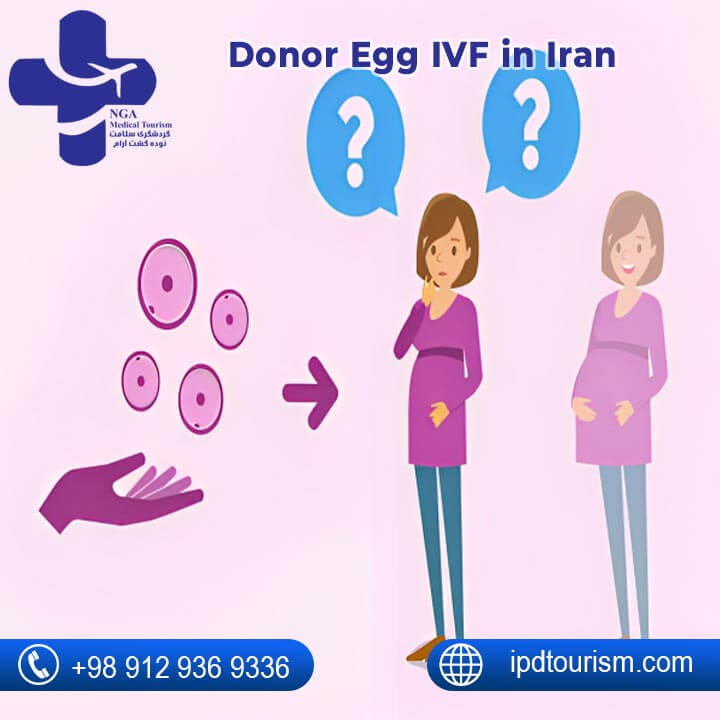
Donor Egg IVF Treatment is a fertility solution involving the use of eggs from a carefully screened donor in the in vitro fertilization (IVF) process. After selecting a donor and synchronizing menstrual cycles, the donor undergoes ovarian stimulation, and the mature eggs are retrieved through a minor surgical procedure. Following fertilization with the recipient partner’s or donor sperm in the laboratory, the resulting embryos are cultured and the best-quality ones are chosen for transfer into the recipient’s uterus. This method is particularly beneficial for individuals or couples facing challenges related to egg quality or availability, offering an increased likelihood of successful pregnancy.
What is the success rate of IVF in Iran?
Success varies due to factors like age, infertility cause, egg/sperm quality, clinic expertise, and techniques.
Younger women have higher success rates (40%-50% per embryo transfer for under 35).
Success declines with age, especially in late 30s and 40s.
Multiple cycles may be needed, and cumulative success rates over several cycles are often higher than per-cycle rates.
Is IVF halal or haram in Islam?
In general, yes, in vitro fertilization is considered permissible in Islam as long as it is for a married couple, and both the egg and sperm originate from within the marital union. This implies that the adoption of sperm, eggs, or embryos from external sources is not allowed within Islamic guidelines.
How long does IVF take to get pregnant?
While the actual IVF cycle spans approximately 4 weeks, the entire process, encompassing preconception health preparations and fertility testing, may extend up to 4 months. This timeline encompasses the period from the initial consultation to the crucial first beta hCG test, which determines if a pregnancy has been successfully achieved.
Ideal candidates for doing IVF in Iran

Unsuccessful other fertility treatments: In Vitro Fertilization is often recommended for individuals or couples who have tried other fertility treatments such as medication, intrauterine insemination (IUI), or surgical interventions without success.
Fallopian tube blockage or damage: IVF can be a suitable option for individuals with blocked or damaged fallopian tubes that prevent natural conception.
Low sperm count or motility: IVF can overcome male factor infertility issues such as low sperm count or poor sperm motility by directly introducing sperm to the eggs during the fertilization process.
Ovulation disorders: Women with irregular or absent ovulation due to conditions such as polycystic ovary syndrome (PCOS) may benefit from IVF as it allows for controlled ovulation induction and retrieval of multiple eggs.
Unexplained infertility: IVF may be recommended for couples with unexplained infertility, where no clear cause of infertility has been identified through diagnostic testing.
In Vitro Fertilization is a widely used fertility treatment where egg and sperm are fertilized outside the body in a lab. Details and regulations can vary by country, including Iran. To get the most accurate and current information, consult with medical professionals or fertility clinics in Iran. IVF availability, cost, and legal regulations can vary by clinic and region in Iran, so research and consult with local experts to understand procedures, success rates, costs, and legal requirements.
What to do after In Vitro Fertilization in Iran
Follow doctor’s instructions: Adhere to your doctor’s guidance on medications, restrictions, and follow-up appointments.
Take prescribed medications: Use medications like progesterone or estrogen as prescribed to support embryo implantation and development.
Rest and avoid strenuous activities: Rest after the IVF procedure and follow your doctor’s advice on resuming regular activities.
Attend follow-up appointments: Regular check-ups are crucial to monitor hormone levels, embryo status, and pregnancy development.
Maintain a healthy lifestyle: Eat well, stay hydrated, avoid smoking and alcohol, and prioritize rest.
Manage stress: IVF can be emotionally challenging, so seek support from loved ones or support groups.
Await pregnancy test results: Take a pregnancy test about two weeks after embryo transfer, following your doctor’s instructions.
Discuss next steps: Depending on the test outcome, discuss prenatal care or future options with your doctor.
The advantage of IVF in Iran
Cost: IVF treatment in Iran is more affordable compared to Western countries, making it an attractive option.
Quality Healthcare Facilities: Iran boasts modern and well-equipped fertility clinics that adhere to international standards, ensuring high-quality care.
Experienced Medical Professionals: Iranian fertility specialists and professionals have extensive training and expertise in IVF procedures.
Advanced Technology and Techniques: Iranian clinics utilize state-of-the-art reproductive technologies and stay updated with the latest advancements in assisted reproductive technology.
Comprehensive Services: Iranian fertility clinics offer a wide range of services, including evaluations, tests, genetic screening, counseling, and post-treatment follow-up care, streamlining the treatment process.
What are the IVF side effects?
IVF side effects may include injection site discomfort, mood swings, and a rare risk of complications like ovarian hyperstimulation syndrome. Emotional stress is also common. While most side effects are mild, it’s essential to communicate closely with healthcare providers for personalized guidance and support during the IVF process.
How Long Does It Take?
The timeline for In Vitro Fertilization treatment in Iran is similar to other countries and includes these key steps:
Ovarian Stimulation (8-14 days): Fertility medications stimulate egg production.
Monitoring: Regular check-ups track follicle growth and hormone levels.
Egg Retrieval: A minor surgical procedure to collect mature eggs (15-30 minutes).
Fertilization and Embryo Culture: Eggs are fertilized in the lab and embryos are cultured.
Embryo Transfer (3-5 days post-retrieval): Selected embryos are transferred to the uterus.
Pregnancy Test (2 weeks post-transfer): A test determines if IVF was successful.
Follow-up: Further monitoring and appointments for pregnant individuals.
Why is IVF recommended in Iran?
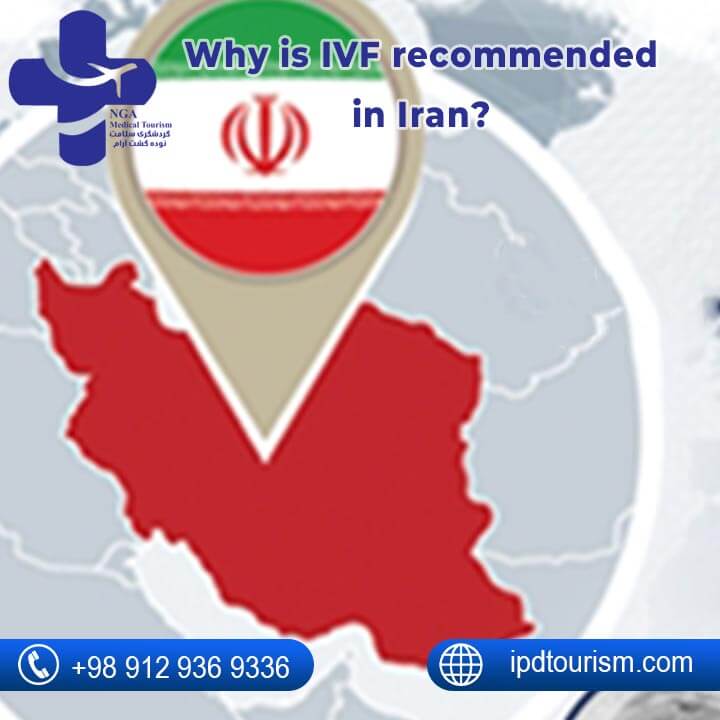
In Vitro Fertilization is recommended in Iran for several reasons, and the country has become a popular destination for individuals and couples seeking infertility treatments. Here are some of the reasons why IVF in Iran is recommended:
- High-Quality Medical Facilities
- Affordable Costs
- Experienced Medical Professionals
- Legal Framework
- Cultural Acceptance
- Gender Selection
- Religious Considerations
- International Patient Services
- Success Rates
How much does IVF cost in Iran?

$2,500

$4000
The cost of IVF (In Vitro Fertilization) treatment in Iran can vary depending on several factors, including the specific clinic, the treatment protocol, additional services or tests required, and individual circumstances. However, IVF treatment in Iran is generally more affordable compared to many other countries.
While it is challenging to provide an exact cost as it can vary, the average cost of a basic In Vitro Fertilization cycle in Iran can range from approximately $2,500 to $4,000 USD. This cost typically includes procedures such as ovarian stimulation, egg retrieval, embryo culture, and embryo transfer. However, it’s important to note that this is a rough estimate, and the actual cost may be higher or lower depending on the clinic and any additional services required.
It’s worth considering that the cost of IVF treatment in Iran is often lower compared to Western countries due to factors such as lower overhead costs and a lower cost of living. This can make Iran an attractive option for individuals or couples seeking more affordable In Vitro Fertilization treatment.
It’s important to remember that in addition to the basic IVF cycle cost, there may be additional costs associated with pre-treatment evaluations, diagnostic tests, medications, genetic screening, cryopreservation (freezing) of embryos, and any other specialized procedures or services that may be required. These additional costs can vary depending on individual circumstances and clinic policies.
It’s advisable to consult with a reputable fertility clinic in Iran to get a detailed breakdown of the cost and to understand the specific services included in the quoted price. This will help provide a more accurate estimate of the total cost of IVF treatment in Iran based on individual needs and circumstances.
The best IVF doctors in Iran
Conclusion:
In conclusion, In summary, IVF represents a remarkable breakthrough in fertility science, offering renewed hope and possibilities for individuals and couples striving to build their families. IVF in Iran emerges as a beacon of hope for aspiring parents, blending advanced medical expertise with compassionate care. With top-tier specialists, cutting-edge technology, and affordable options, Iran stands as a leading destination for those on the journey to parenthood through IVF.
FAQ:
es, it is possible to select the sex of an embryo during the In Vitro Fertilization process using a technique called Preimplantation Genetic Diagnosis (PGD) or Preimplantation Genetic Screening (PGS).
Before undergoing In Vitro Fertilization treatment, several pre-IVF assessments and evaluations are typically conducted to assess the individual or couple’s overall health and determine the most appropriate treatment plan.
The cost of In Vitro Fertilization in Iran can vary widely depending on the clinic and the specific treatment plan. However, it is generally lower than in other countries, with the average cost of one In Vitro Fertilization cycle ranging from $2,000 to $4,000.
There is no specific age limit for In Vitro Fertilization in Iran, but most clinics will not offer treatment to women over the age of 50.
Multiple Pregnancy , Ovarian Hyperstimulation Syndrome (OHSS) , Ectopic Pregnancy , Birth Defects and …
Age-related Factors , Poor Egg or Embryo Quality , Implantation Failure , Genetic or Chromosomal Abnormalities , Uterine Factors , Lifestyle Factors , Sperm-related Issues , Medication and Protocol Factors
No, gender selection is not allowed in Iran except in cases where a genetic disorder is known to affect only one sex.
The number of embryos produced in a single In Vitro Fertilization cycle can vary depending on several factors, including the woman’s age, ovarian response to stimulation, and the quality of the retrieved eggs.
Yes, In Vitro Fertilization babies can be healthy. The overall health of In Vitro Fertilization babies is generally comparable to that of babies conceived naturally. However, it is important to note that there are certain factors that may influence the health outcomes of In Vitro Fertilization babies, including: Prematurity, Low birth weigh and …
The ideal age for In Vitro Fertilization treatment can vary depending on individual circumstances, but generally, younger women tend to have higher success rates.
The chances of multiple pregnancies in In Vitro Fertilization can vary depending on several factors like: Number of embryos transferred , Age of the woman , Embryo quality , Elective Single Embryo Transfer (ESET) , Assisted hatching or blastocyst transfer



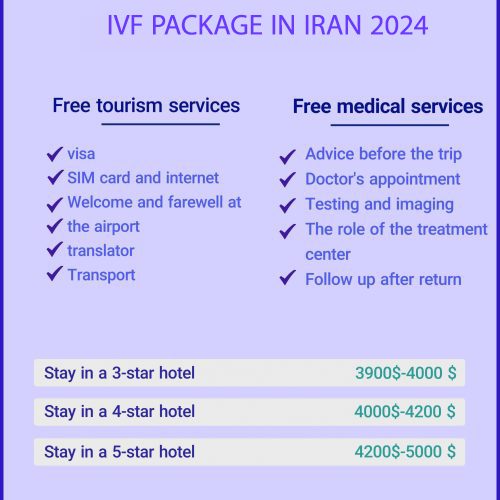




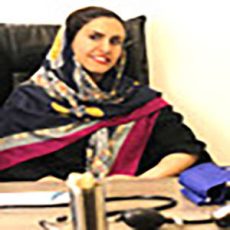







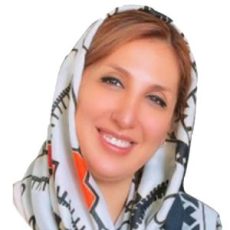



20 Comments